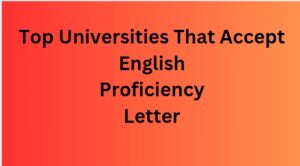
Table of Contents
Introduction
Are you tired of getting rejection emails for scholarships you were sure you’d win? Wondering why your application didn’t make the cut? You’re not alone. Many scholarship applications fail for avoidable reasons, and understanding these common pitfalls could be the key to turning those rejections into success.
Here’s a breakdown of the most frequent mistakes applicants make and how you can ensure your next application stands out.
Top 7 Reasons Why Scholarship Applications Get Rejected
1. Lack of a Position-Specific Cover Letter
One of the most common mistakes applicants make is submitting a generic cover letter that could apply to any position or opportunity. A cover letter that’s not tailored to the specific scholarship or program shows a lack of effort and interest.
A cover letter tailored to the opportunity demonstrates that you’ve taken the time to understand the role, the organization, or the institution. It shows that you’re serious about this particular opportunity and not just casting a wide net. A generic cover letter, on the other hand, suggests you’re applying without much thought, which can easily lead to rejection.
How to Fix It: Research the scholarship, program, or organization you’re applying to. Mention specific details about why this opportunity appeals to you and how your background and goals align with it. Make sure the cover letter addresses the unique aspects of the opportunity rather than offering generic praise or qualifications.
2. Ignoring Application Instructions
It’s surprising how many applicants fail to follow the basic instructions listed in the scholarship or job ad. Whether it’s forgetting to include a required document or submitting a cover letter when it wasn’t requested, not following directions can be a quick route to rejection.
Failing to follow instructions sends a message that you’re either careless or unwilling to pay attention to detail. Scholarship committees often deal with a large number of applications, and if you can’t follow the basic requirements, your application is likely to be tossed aside.
How to Fix It: Before you submit, read the instructions carefully. Make a checklist of the required documents and ensure you’ve provided everything that’s been asked for. Double-check that your files are in the requested format and that your submission is complete.
3. Lack of Personalization and Research
One of the easiest ways to stand out in a scholarship application is by showing that you’ve researched the program or institution. Unfortunately, many applicants submit generic applications without taking the time to understand what the organization is looking for.
Personalization shows that you’re genuinely interested in the opportunity. It demonstrates that you understand the values and goals of the organization and that you’ve considered how you can contribute. When an application lacks this, it can come across as rushed or half-hearted, making it easier for the committee to reject.
How to Fix It: Invest time in researching the organization, their work, and what they’re looking for in candidates. Tailor your application to reflect how your skills, experience, and goals align with their mission. Mention specific details about the scholarship or program to show you’ve done your homework and are a serious contender.
4. Poorly Written Personal Statement
A personal statement can make or break your scholarship application. Unfortunately, many applicants submit statements that are vague, unorganized, or fail to convey their passion and goals.
The personal statement is your chance to tell your story. It should reflect who you are, your achievements, and what you aim to accomplish in the future. A poorly written or generic personal statement can make you appear unmotivated or unclear about your own goals, reducing your chances of getting selected.
How to Fix It: Take the time to craft a compelling personal statement. Highlight specific experiences that have shaped your academic and career ambitions, and be clear about your future goals. Make sure the statement is well-organized, free of errors, and speaks directly to how the scholarship will help you achieve your aspirations.
5. Weak Letters of Recommendation
Letters of recommendation can carry a lot of weight in the selection process. However, many applicants submit weak or generic letters from people who don’t know them well enough to speak in detail about their strengths and potential.
A letter of recommendation should provide insight into your character, work ethic, and accomplishments. If your recommender doesn’t know you well or submits a generic letter, it won’t do much to support your application. Weak recommendations can undermine your chances, especially if other applicants have strong endorsements.
How to Fix It: Choose recommenders who know you well and can speak to your academic or professional achievements. Be sure to give them enough time to write a thoughtful, detailed letter. You can also provide them with information about the scholarship and your goals so they can tailor the letter accordingly.
6. Submitting an Incomplete Application
Many applicants get disqualified simply because they fail to submit all the required materials. Whether it’s missing documents, incomplete forms, or forgotten references, an incomplete application signals a lack of thoroughness.
Submitting an incomplete application gives the impression that you’re either disorganized or not fully committed to the process. Review committees often have strict criteria and deadlines, and failing to meet these will result in an automatic rejection.
How to Fix It: Double-check every requirement before submitting. Create a checklist of all the necessary documents and make sure they’re attached and properly formatted. Give yourself ample time to review and ensure your application is complete.
7. Weak Academic or Extracurricular Record
While grades and achievements aren’t the only criteria for scholarships, a weak academic record or a lack of extracurricular involvement can hurt your chances—especially for highly competitive scholarships.
Many scholarships are merit-based and consider academic performance or extracurricular contributions as a major factor. If your grades or achievements are below average, it could suggest that you might struggle to meet the scholarship’s expectations.
How to Fix It: If your academic record isn’t your strongest point, focus on highlighting your extracurricular activities, volunteer work, leadership roles, or other experiences that demonstrate your strengths. Make sure your application emphasizes what you can bring to the scholarship program, even if it’s outside of academics.
Conclusion
Receiving a scholarship rejection can be disheartening, but in many cases, it’s preventable. By paying attention to detail, personalizing your application, and ensuring all requirements are met, you can significantly improve your chances of success. Scholarships are competitive, and it’s important to stand out by showing genuine interest, a well-thought-out application, and the ability to follow instructions. Remember, each application is an opportunity to present yourself at your best. With the right approach, you’ll greatly increase your chances of turning a rejection into an acceptance. Keep refining your efforts, and your persistence will pay off.
For more information, read this article by EduAdvisor.
See also:
Valencia College Global Achievers Scholarship 2025/2026 for International Students: Apply Now!
Coca-Cola Scholarship 2024–25: Apply Now!
The University of Turin Scholarships 2024/25 in Italy: Apply Now!












